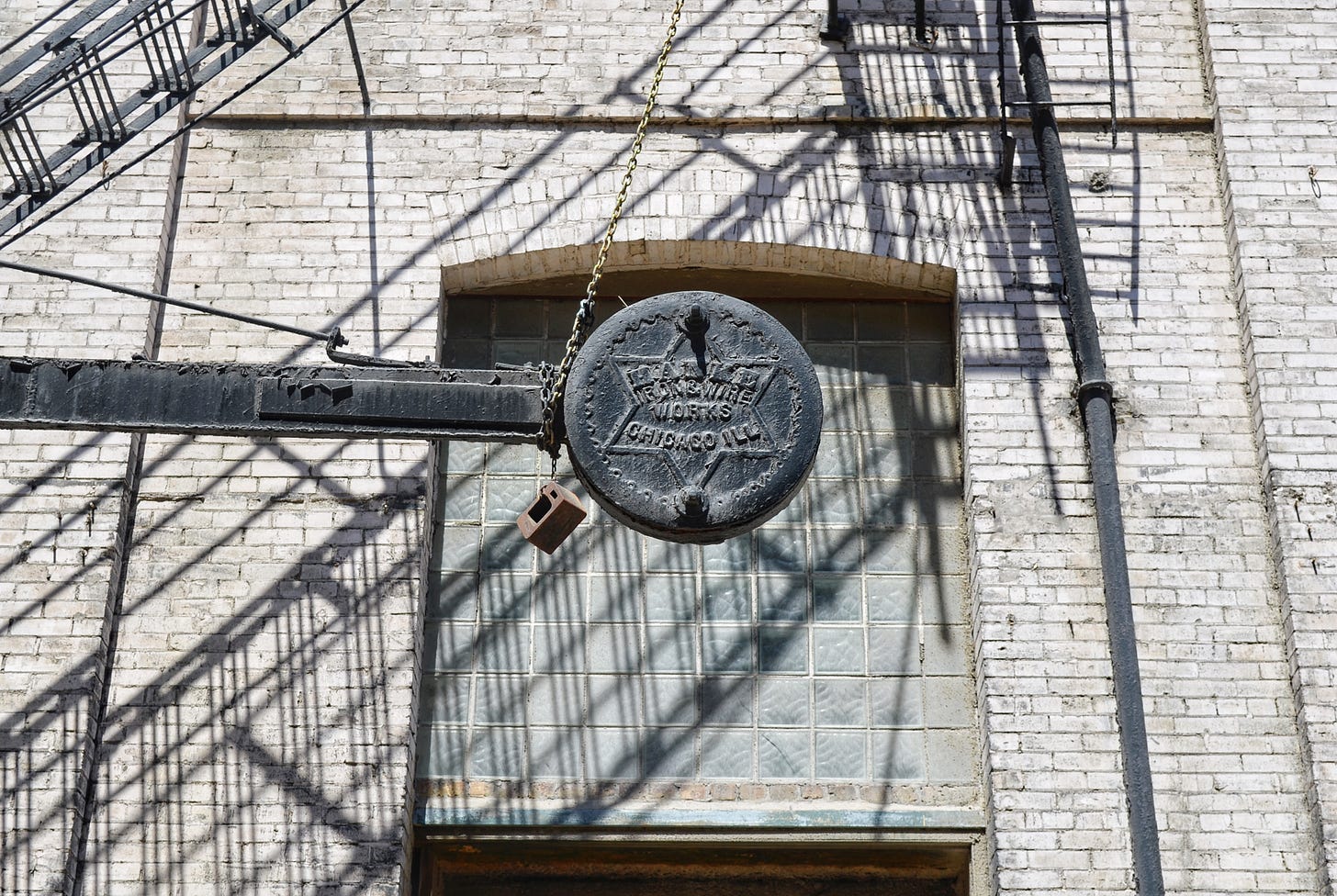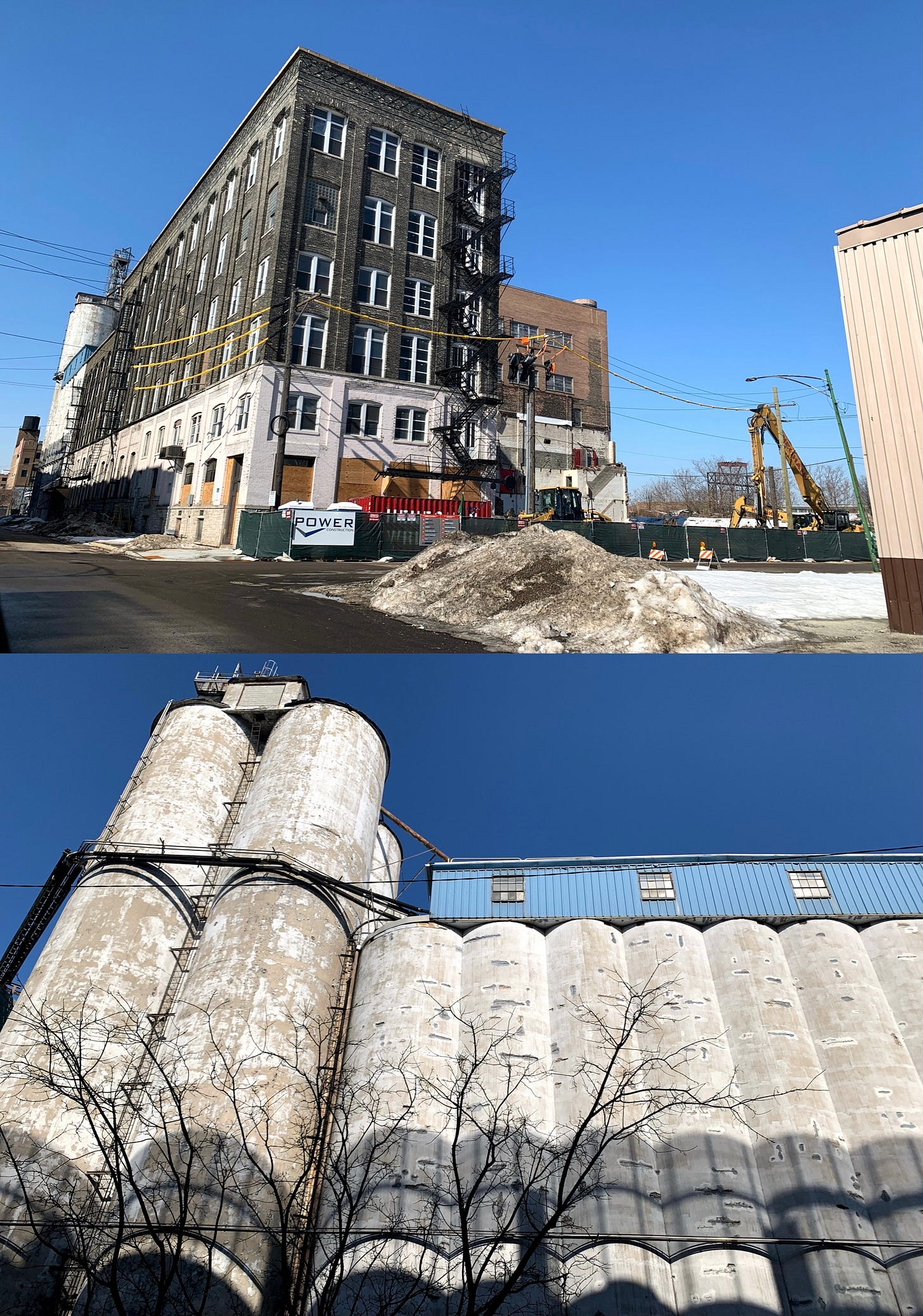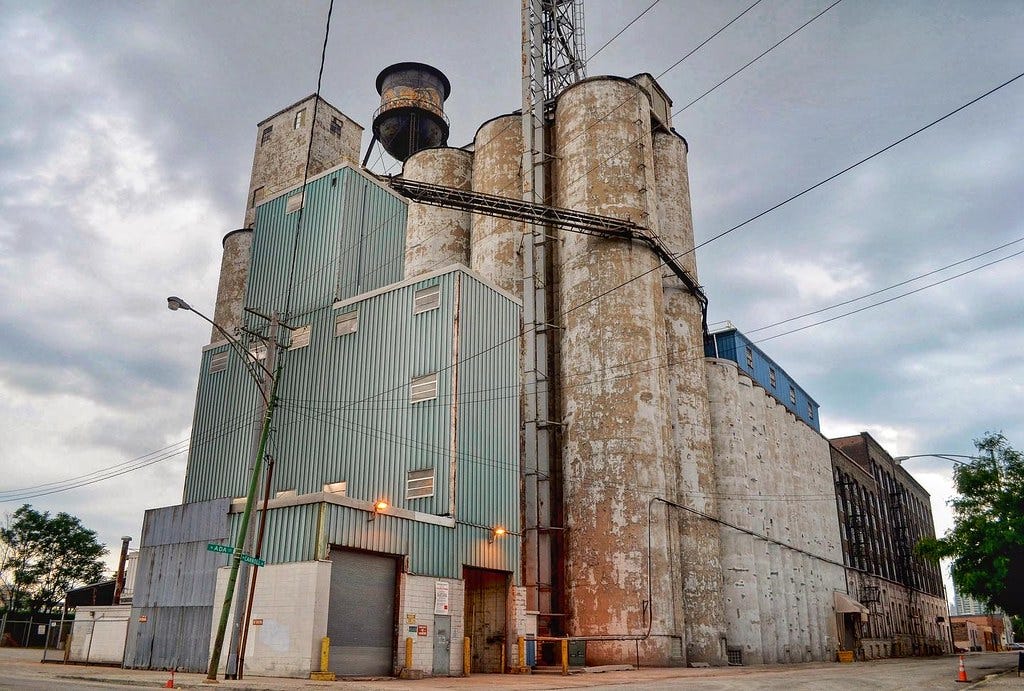Archer Daniels Midland Wheat Mill
The Fulton-Randolph Market Landmark District was created in 2015 to “recognize and preserve the historic significance and importance of the…historic streetscapes and buildings” as the area quickly gentrified over the last decade, becoming a shell of its former self. It was important to protect what was left. But part of the problem is the district’s seven blocks are too limited. One building after another is being lost to new development, like Daniel Burnham’s Chicago Machinery Exchange back in 2018. A complex that encapsulates the history and architecture of Fulton Market, the ADM Mill, is currently being torn down just like many others before it. More will soon follow, like 1032-42 W. Madison, in a never-ending path of demolition for this area despite the many efforts of preservationists.

Originally serving as Eckhart & Swan’s wheat and rye mill when it was built between 1896-97, the flour mill was the largest in the state of Illinois at the time of its construction with 2,200 barrels according to the Chicago Tribune. It was designed by architects William Carbys Zimmerman, who would serve as Illinois State Architect, and John J. Flanders. Additions were made in 1910 with the grain elevators and silos going up in 1927 and 1948. Chicago-based ADM bought the plant for $14 million in 1990, then put it on the market in 2017. Sterling Bay, the controversial real estate developer behind the $6 billion Lincoln Yards, later purchased the block-long 2.2. acre property for $25 million.

Starting in February of this year, Sterling Bay started demolishing the complex to make way for what will include a combo office, retail, hotel, and residential space as well as a new Metra station. They had planned to kept parts of the structure, incorporating or adapting the silos, but engineers determined it couldn’t be saved.


Chicago was once the grain capital of the world. There has been a grain elevator at this specific site since at least 1886, according to Robinson’s Map of Chicago. Now that 145-year history is gone, wiped away purely due to greed and a lack of imagination or in this case, the famous last words of every developer who knocks down a building, a lack of “structural integrity”.
Tower cranes replaced the meat-packers and other workers of this area awhile ago, and I’m not sure that’s a good thing. What’s good about an architecturally and historically rich city becoming unrecognizable before your eyes? Some might like the newly transformed Fulton Market but the specificity of what made Chicago *Chicago* is being lost on a daily basis. It now looks like any other city.
The Archer Daniels Midland Wheat Mill should have been protected, especially as it’s located just a block outside the landmark district’s boundaries. The existing structure could have been repurposed, no matter the developer’s claims, paying homage to Fulton Market’s industrial heritage. How cool it would have been to see at least the silos as part of an adaptive reuse for the proposed Metra station for this site. Or even a facadetomy of the original brick building. A mix of the old and the new. But that was not to be. I’ve said it before and I’ll say it again, the Fulton Market area becomes less and less interesting every year.








